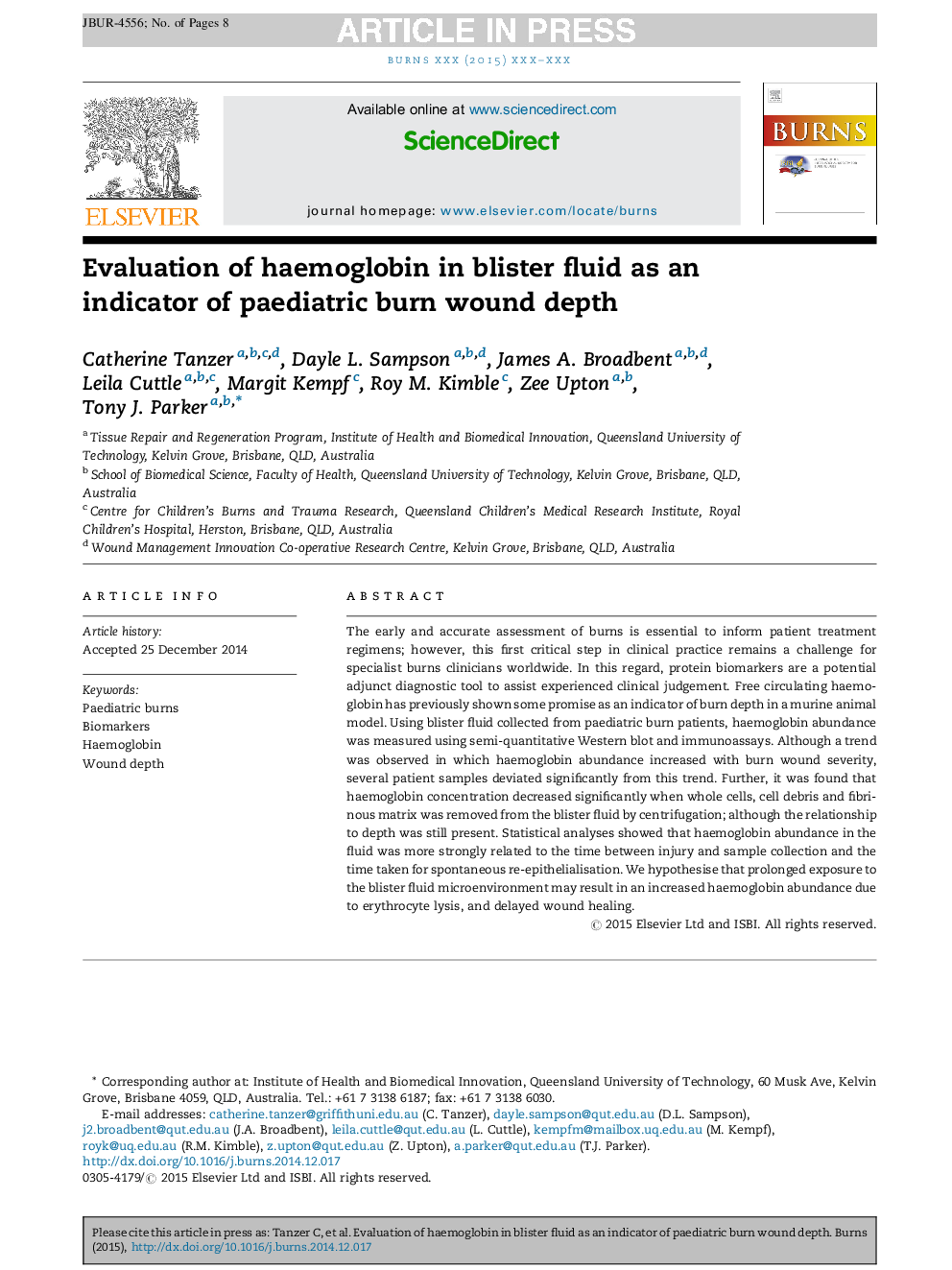| Article ID | Journal | Published Year | Pages | File Type |
|---|---|---|---|---|
| 6048708 | Burns | 2015 | 8 Pages |
Abstract
The early and accurate assessment of burns is essential to inform patient treatment regimens; however, this first critical step in clinical practice remains a challenge for specialist burns clinicians worldwide. In this regard, protein biomarkers are a potential adjunct diagnostic tool to assist experienced clinical judgement. Free circulating haemoglobin has previously shown some promise as an indicator of burn depth in a murine animal model. Using blister fluid collected from paediatric burn patients, haemoglobin abundance was measured using semi-quantitative Western blot and immunoassays. Although a trend was observed in which haemoglobin abundance increased with burn wound severity, several patient samples deviated significantly from this trend. Further, it was found that haemoglobin concentration decreased significantly when whole cells, cell debris and fibrinous matrix was removed from the blister fluid by centrifugation; although the relationship to depth was still present. Statistical analyses showed that haemoglobin abundance in the fluid was more strongly related to the time between injury and sample collection and the time taken for spontaneous re-epithelialisation. We hypothesise that prolonged exposure to the blister fluid microenvironment may result in an increased haemoglobin abundance due to erythrocyte lysis, and delayed wound healing.
Related Topics
Health Sciences
Medicine and Dentistry
Critical Care and Intensive Care Medicine
Authors
Catherine Tanzer, Dayle L. Sampson, James A. Broadbent, Leila Cuttle, Margit Kempf, Roy M. Kimble, Zee Upton, Tony J. Parker,
